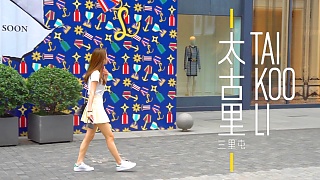Nightly performances at 8pm and 9pm.
[640],shadow=true,start=,stop=

Live more ...
 Musical fountains in LiuZhou 柳州, GuangXi province
Musical fountains in LiuZhou 柳州, GuangXi provinceNightly performances at 8pm and 9pm.


|
With Daniel Dumbrill ...
With Li JingJing ...
|

|
From the Himalayas to the Gobi Desert ...
|

|

|

|
SānLǐTún is a popular destination for shopping, fashion, dining and entertainment.
|

|
A short 30 minute high speed train ride from BeiJing, TianJin is the largest coastal city in northern China.
|

|
WuZhen 乌镇, a 1,300 years old water town on the lower reaches of the YangTze River, is a national 5A scenic area and one of China's top ten historical & cultural places.
With the crystal ...
|

|
蓝草的一生?蓝印花布的一生?还是李子柒花裙子的一生
Calico is a plain-woven textile made from unbleached cotton.
Li ZiQi demonstrates her techniques with this traditional art and craft ...
|